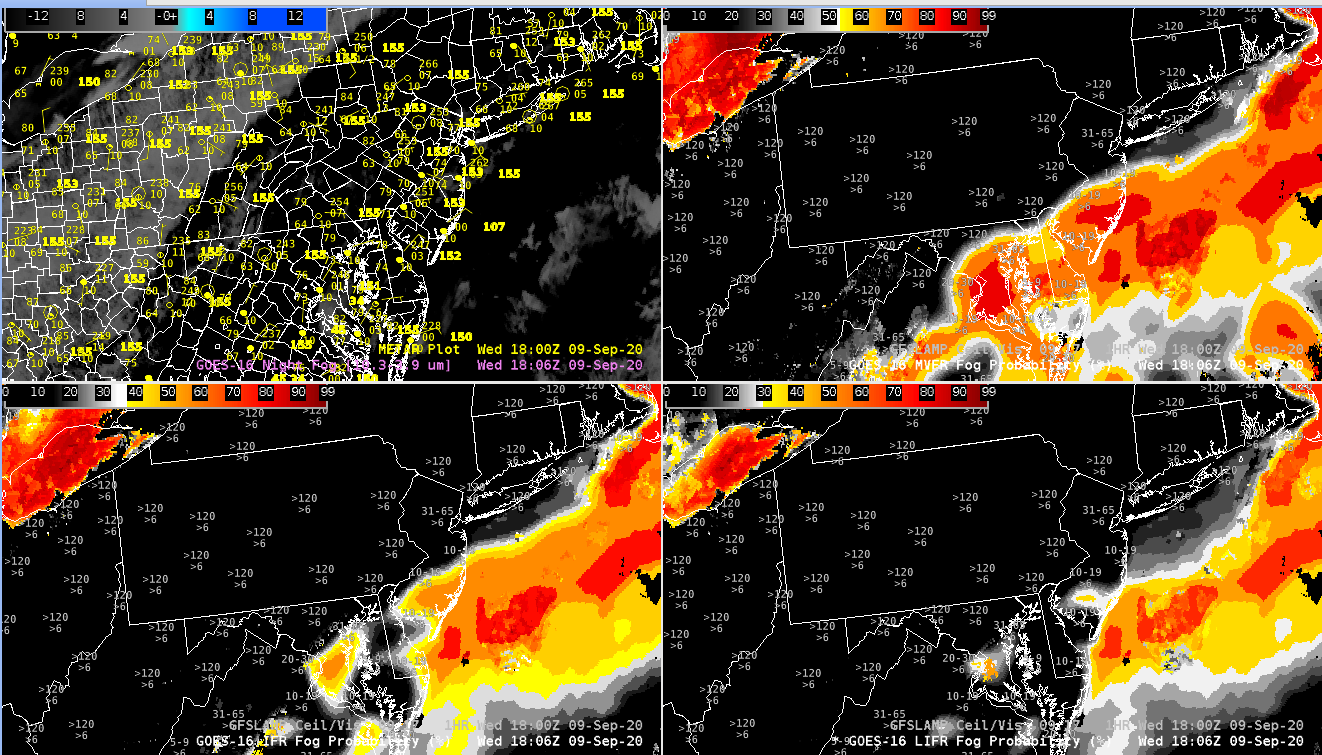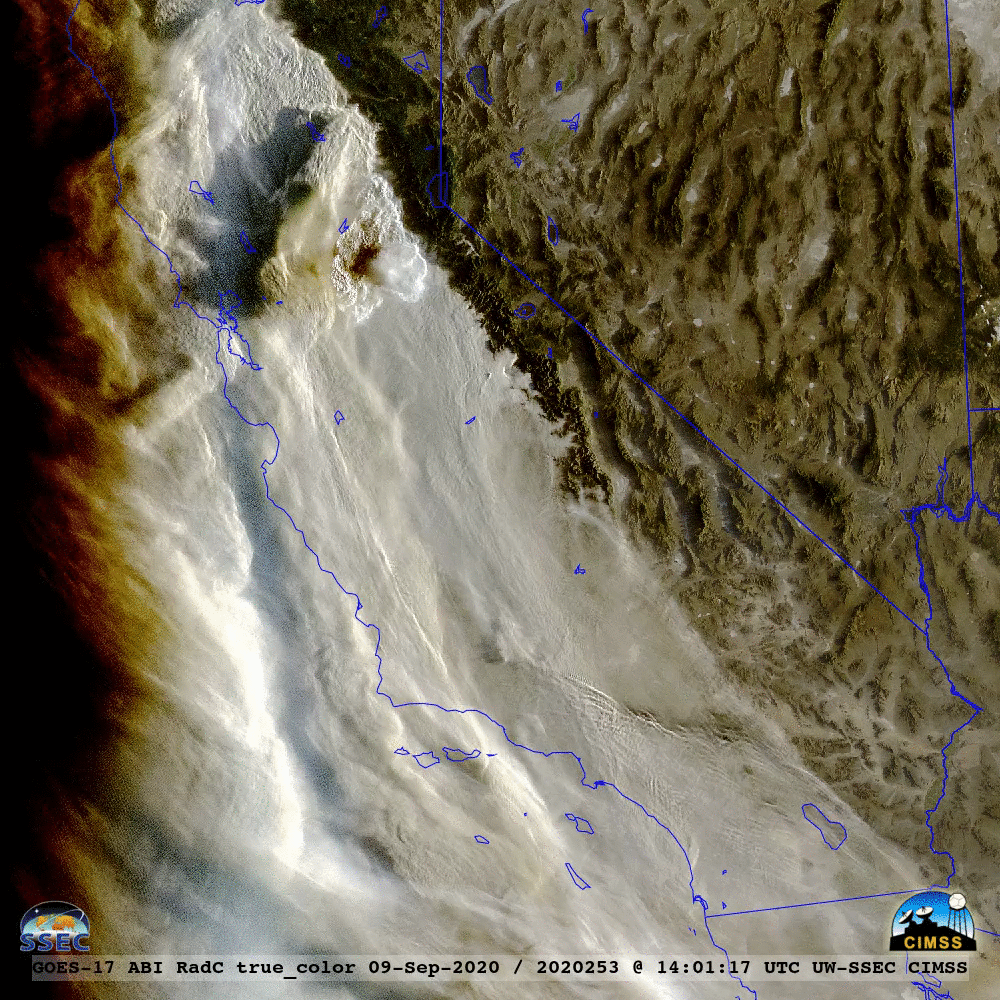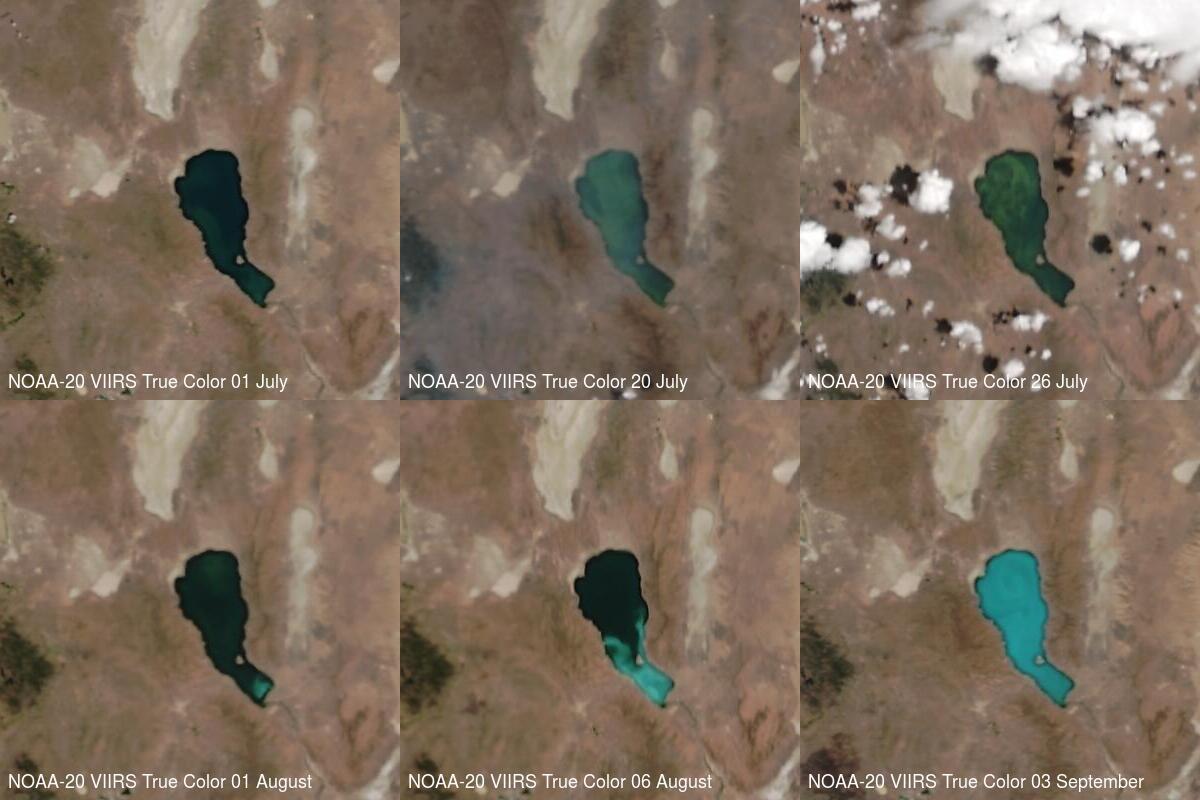
[ Archive ]

 |
CIMSS-NOAA Weekly Report [ Archive ] |
 |
CIMSS AND ASPB WEEKLY HIGHLIGHTS FOR THE WEEK ENDING SEPTEMBER 11, 2020
PRODUCTS AND APPLICATIONS:
GOES-16 Fog/Low Stratus Products on the Satellite Broadcast Network: As of September 9, 2020, the Geostationary Operational Environmental Satellite (GOES)-16 fog/low stratus (FLS) products, which were developed by the STAR Aviation Team, are available on the National Weather Service (NWS) Advanced Weather Interactive Processing System (AWIPS) Satellite Broadcast Network (SBN). Due to bandwidth and cost constraints, the SBN is reserved for higher priority products. The SBN service ensures that the FLS products are available with minimal latency and very high reliability. The GOES-16 FLS products became operational in NESDIS on August 7, 2020. The SBN delivery will replace the longstanding experimental Local Data Manager (LDM) feed provided by the Cooperative Institute for Meteorological Satellite Studies (CIMSS). The NWS are long time users of the FLS products, utilizing them for assessing and nowcasting aviation, maritime, and ground transportation hazards. The FLS products provide probabilistic information on cloud ceiling and surface visibility via data fusion and machine learning (artificial intelligence). Additional information on the FLS products, including links to training material and use cases, are available on the NWS Virtual Lab (https://vlab.ncep.noaa.gov/). Finally, the FLS product suite was the subject of the September 10, 2020 NWS Satellite Book Club seminar, which is also available on the NWS Virtual Lab. (M. Pavolonis, E/RA2, 608-263-9597, Mike.Pavolonis@noaa.gov, C. Calvert, CIMSS, S. Lindstrom, CIMSS)
 (Click image to enlarge)
(Click image to enlarge)
Figure: A recent example of the GOES-16 fog/low stratus (FLS) products displayed in AWIPS.
AWARDS AND RECOGNITION:
PUBLICATIONS:
WORKSHOPS, CONFERENCES, AND MEETINGS:
TRAINING AND EDUCATION:
VISIT Training on Above-Anvil Cirrus Plumes: Scott Lindstrom from the Cooperative Institute for Meteorological Satellite Studies (CIMSS) gave Virtual Institute for Satellite Integration Studies (VISIT) training on Above-Anvil Cirrus Plumes (AACPs), features of strong convective storms. The presence of an AACP is very well-correlated with severe weather. AACPs can be identified in both visible and infrared imagery. This live training was given to a forecaster from the Bismarck ND Forecast Office (WFO BIS). (Scott Lindstrom, CIMSS, 608 263 4425)
MEDIA AND OUTREACH:
Reuters Interview and Article: Jim Kossin (NOAA/NCEI) was interviewed by a Reuters London reporter for a story on extreme events and links to climate change. The story appears here https://reut.rs/3ikL4JK. (Jim Kossin, NOAA/NCEI, 608-265-5356)
SSEC and CIMSS Scientists in the News: Scientists at the University of Wisconsin-Madison (UW) Space Science and Engineering Center (SSEC) and the Cooperative Institute for Meteorological Satellite Studies (CIMSS) provide expert commentary, interviews, and imagery to news media and develop case studies to promote science. CIMSS Satellite Blog contributors Scott Bachmeier and Scott Lindstrom published posts on "Northern California’s Bear Fire produces a pyrocumulonimbus cloud" (Sept. 9), "2 pyrocumulonimbus events in Northern California" (Sept. 8), "Using NUCAPS soundings in and around fire locations" (Sept. 7), "Pyrocumulonimbus clouds produced by the Cameron Peak Fire in Colorado" (Sept. 6), "Pyrocumulonimbus cloud spawned by the Creek Fire in California" (Sept. 5), and "Lake water color changes at Pyramid Lake in Nevada" (Sept. 4). Read more: https://cimss.ssec.wisc.edu/satellite-blog/. (J. Phillips, SSEC, 608-262-8164, S. Bachmeier, CIMSS, 608-263-3958, S. Lindstrom, CIMSS)
 (Click image to enlarge)
(Click image to enlarge)
Figure: GOES-17 true color images captured the southward drift of the high-altitude pyroCb cloud material produced from the Bear Fire in Northern California on September 9, 2020. Credit: CIMSS, Geo2Grid.
 (Click image to enlarge)
(Click image to enlarge)
Figure: NOAA-20 VIIRS imagery sequence showing changes in water color caused by an algal bloom at Pyramid Lake in Nevada, July 1-20, 2020. Credit: NOAA, CIMSS.
OTHER:
| Archived Weeklies Page | Submit a report item |